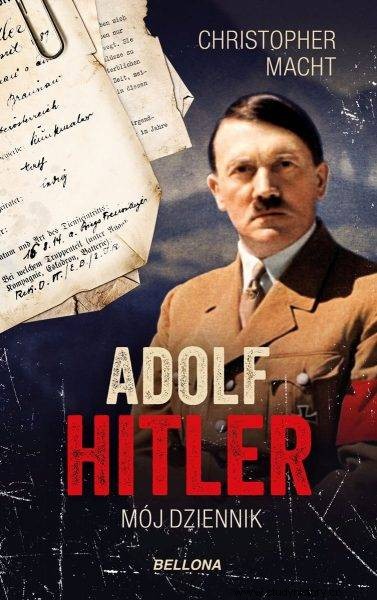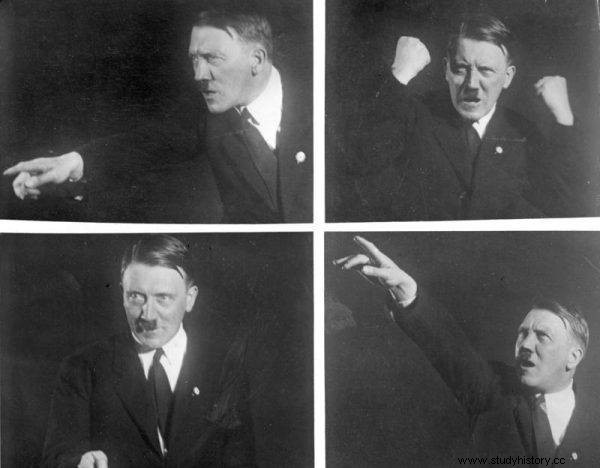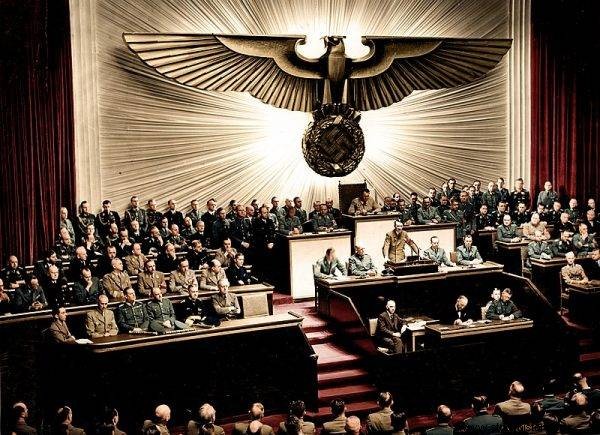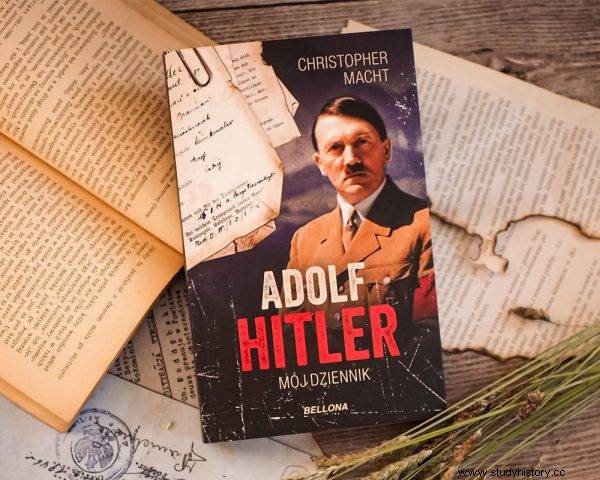He was not only the official photographer of the Führer, but also his close friend. It was he who created the distinctive image that gave Hitler power.
For the purposes of the Nazi propaganda machine, he created - as he estimated - over two million photos. Almost every album devoted to Hitler and the Third Reich contains at least one photo by Heinrich Hoffmann. And it's hardly surprising. For he was not only an ardent propagandist, but also a very talented photographer. In his memoirs published after World War II, he wrote about himself:
I have always been a photographer by profession, and by interest - a die-hard art lover, album publisher and a zealous, albeit modest, user of pencils and brushes. I did my professional apprenticeship at my father's renowned photographic studio, and myself became a master craftsman in my field of art. Over the years, kings, princesses, great artists, singers, writers, politicians and men and women known for a variety of reasons have stood in front of my lens for a few seconds which were enough to capture the person and the occasion.
My friend the Führer
In such circumstances, he first met a budding politician who was about to leave a dark mark on the history of the whole world. I am talking about Adolf Hitler, of course. In October 1922, Hoffmann received an order from one of the American photo agencies to take a picture of a politician. The Americans offered a staggering - in those days - a sum of $ 100.

For the purposes of the Nazi propaganda machine, Hoffmann created - as he estimated - over two million photos.
As Hoffmann emphasized, "at that time, of the two of us, I was the more famous". And indeed. In the early 1920s, Hoffmann was making a staggering career as a press photographer whose "unique photos" had high prices. . He recently released his first album Ein Jahr Bayrische Revolution im Bilde . Meanwhile, the future chancellor of Germany, in the eyes of his - soon - court photographer, was "someone of no importance, presenting only the same old political demands as the rest."
However, that was not to change for a long time. Hoffmann, as a member of the Nazi party number 427 (Hitler was number 555), became close friends with the ambitious Adolf. Although the beginning of this relationship was not easy. As Peter Longerich reports:" Hitler did not allow himself to be photographed at the beginning of his career. Hoffmann tried in various ways to break this taboo and gradually won over him with invitations, long talks about art, etc. ".
With the face of Adolf Hitler
Eventually, he was given permission to publish his first studio photo of Hitler. This happened in September 1923. From then on, they began to work together to create a public image for Hitler. Roger Moorhouse describes:
Hoffmann was more than the personal portraitist of the Fuhrer. It was he who worked in the 1920s on the style of the future dictator, choosing poses and clothes with him to show it in the best possible way. Uniform SA and Lederhosen rejected suits in subdued colors. Together, they created the public image of Hitler at a time when few politicians paid attention to such seemingly trivial matters.

The text was inspired by the latest book by Christopher Mraft, Adolf Hitler. My journal ”(Bellona, 2022).
On the other hand, Hitler took his image deadly seriously. In the book of the latest book by Christopher Macht in the genre of historical fiction - Adolf Hitler. My journal - we read what he might have had to say about it:
Hoffmann in the Third Reich is a unique figure. Its influence in shaping my image is as significant as, for example, the actions of Minister Dr. Goebbels and his ministry. It was thanks to the clever eye of Hoffmann that the photos of me created my proper image and influenced how the Germans perceived me , but not only. After all, Hoffmann had the exclusive right to take pictures of me, which is why only his photos appeared in the foreign press.
And since the portraits of the leader of the Third Reich were spreading like hot cakes after his coming to power in 1933, Hoffmann - having the exclusive right to sell them - earned a fortune on them. Estimates are millions of marks. This lucrative business also earned Hitler himself, charging 10% of the photographer's income.
Complex Dictator
To make the photos convincing, Hoffmann photographed Hitler during rehearsals for speeches. Later, he was able to evaluate gestures and facial expressions - and correct them accordingly. A series of photos from one of such "image exercises" has become almost a cult. However, not all photos taken by Hoffmann were approved by the "model". Christopher Macht's book Adolf Hitler. My journal puts the following words into the mouth of the leader of the Third Reich:
I think for the future and already now I have banned my photographer from certain activities that will definitely protect me from being ridiculed. (...) without much doubt ordered Heinrich Hoffmann never to publish my image in braces again and those existing to be destroyed immediately.
(...) I do not wear swimming trunks, so that nobody would take pictures of me in this outfit. This is because, in my opinion, no leader of a serious country should appear in the picture wearing only swimming trunks or underwear. (...) Some people believe that the same applies to Bavarian leather shorts. That's why you won't see me in them anymore.

To make the photos convincing, Hoffmann photographed Hitler during the speech rehearsals.
As Peter Longerich argues, this was due to the Führer's panicky fear of being ridiculed. Hitler was afraid that "his own image of a heroic fighter could be damaged or exposed as a farce . The fear of being fooled by improperly taken photos haunted him for the rest of his life. " For this reason, the chancellor stands in standardized postures with a fierce face in almost all photographs.
Propaganda engine
Later, the repertoire of shots and facial expressions was somewhat expanded, but the tone of the photos - often distributed as postcards - remained the same. They show Hitler standing rigidly in a commanding posture, with a studied expression on his face. He poses as a statesman, and this is a militant in an SA uniform, then again a talker , making sweeping gestures, with a face expressing determination. In turn - as Longerich emphasizes:"Group photographs with party companions invariably show Hitler in the same pose, with an impenetrable face and arms folded over his belly."
Technological development allowed Hoffmann to leave the studio and capture the most significant moments of the Führer's career and his entourage also outdoors . This made his camera one of the most important tools of Nazi propaganda. Already in the album The Awakening of Germany in Word and Image, published in 1924 on the occasion of Hitler's 35th birthday Hoffmann praised the future chancellor as "the strongest political personality of the national movement and the leader of the Volkist-German freedom movement."

The image of Hitler as we know it today was largely created and controlled by himself, with the help of Hoffmann
Many of the photographs taken by him over the next 20 years found their way to German homes in elegant albums. Collections such as Hitler in his home (1938), The Face of the Führer (1939) or With Hitler in the West (1940) enjoyed considerable popularity among the Germans. Hoffmann's photographs were published as postcards, posters, illustrations of newspapers and books, and even ... postage stamps!
As Peter Longerich writes:" the image of Hitler we know today was largely created and controlled by himself, with the help of Hoffmann ". Without the help of his court photographer, would he have managed to climb to the top and unleash World War II? Or maybe he would remain only "someone irrelevant"? A politician who avoids the lens, who - due to his strategy of invisibility - kept incognito for Germans and the whole world?

